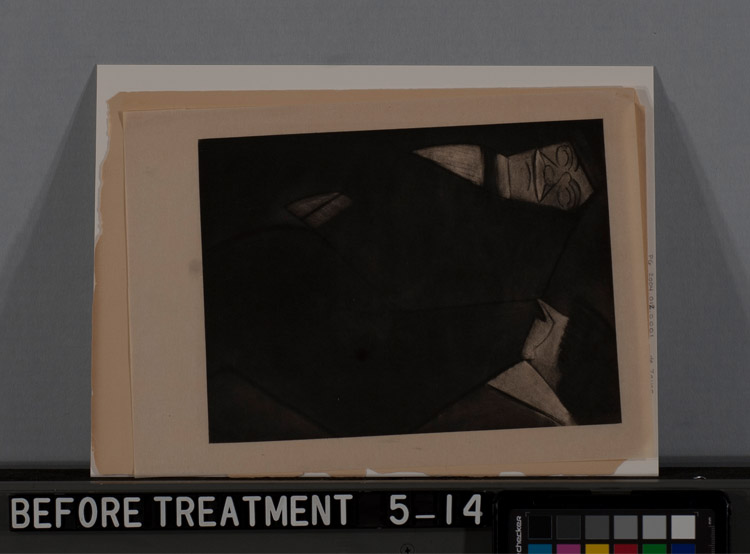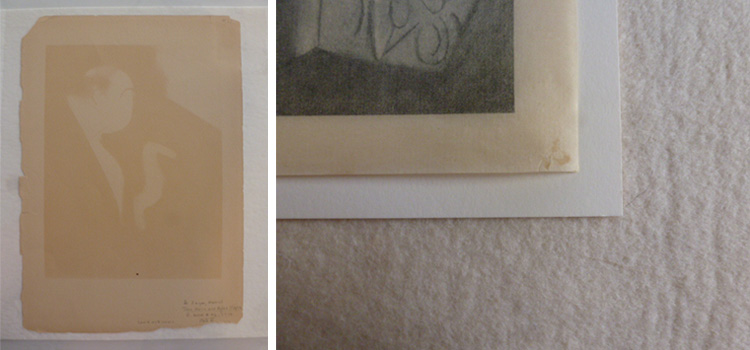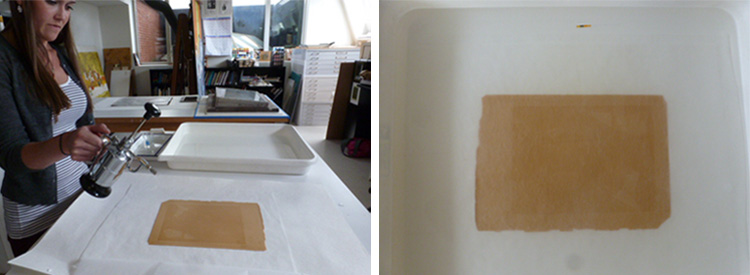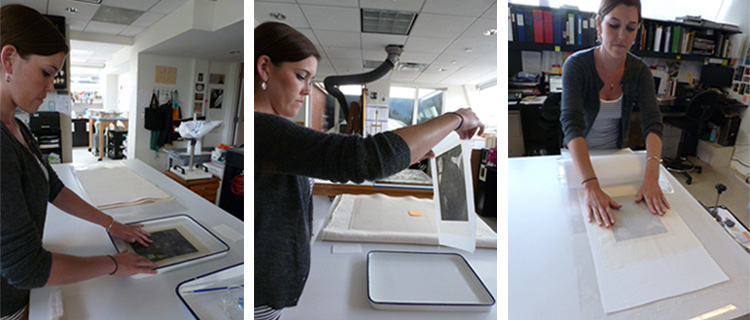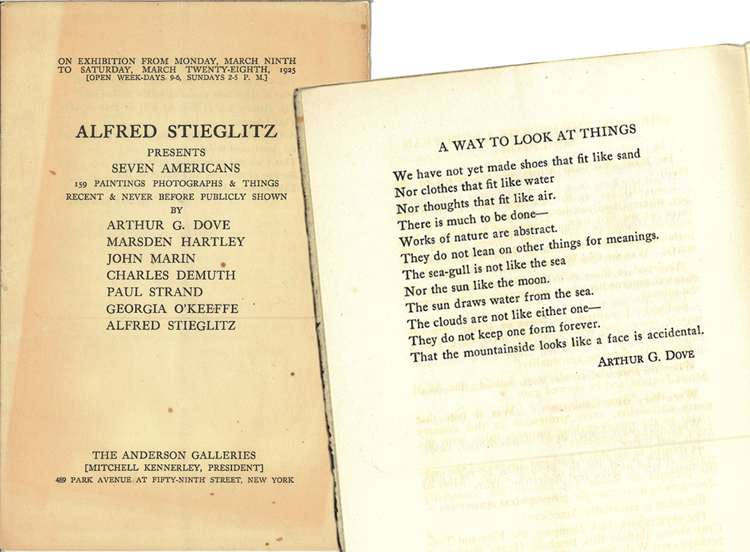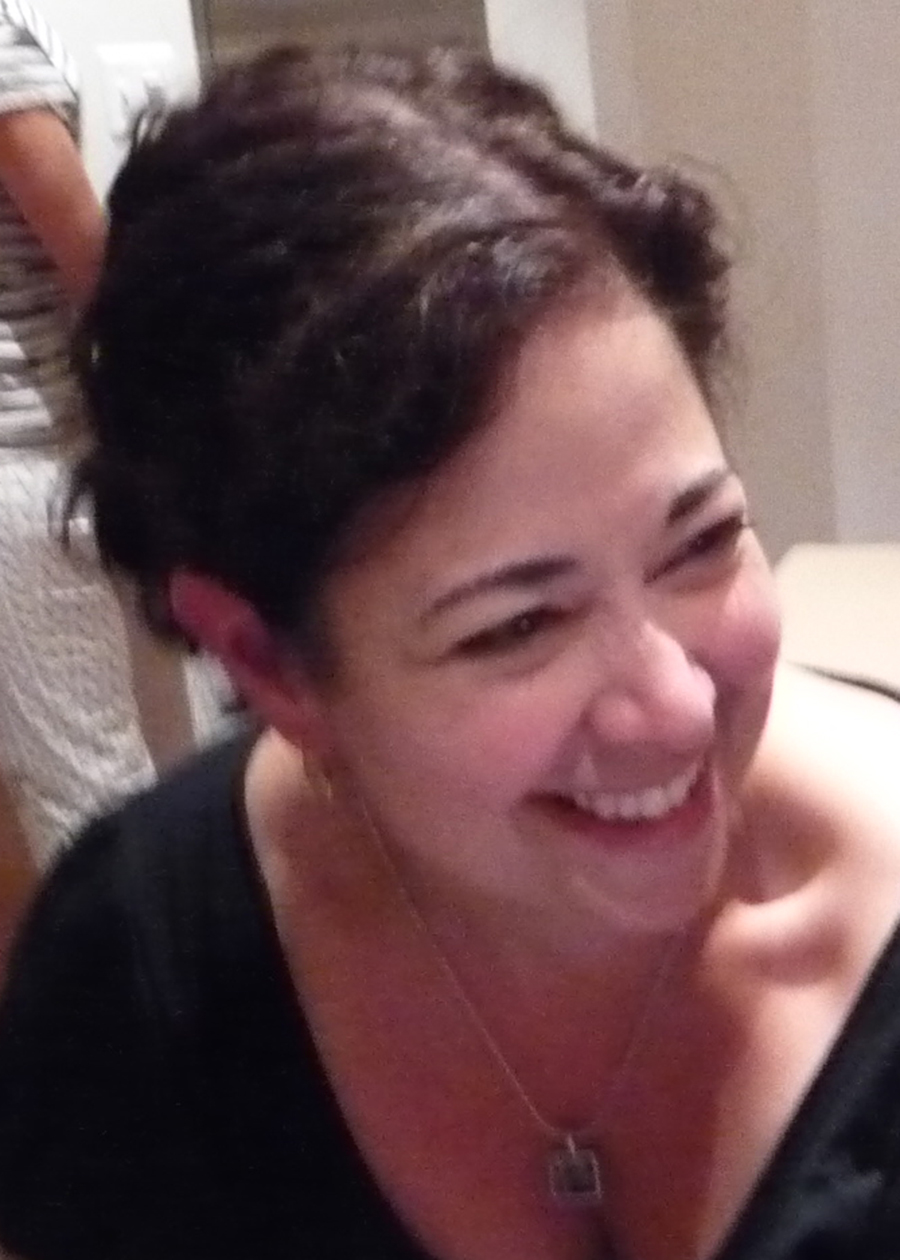In this three part series, Conservation Assistant Caroline Hoover outlines the process of treating a photogravure by Marius de Zayas. Read Part 1 here.
CONDITION
This photogravure on Japanese tissue was attached in the top left corner to a backing paper with a European watermark so that it could be included in the Camera Work book. Due to the single attachment, however, the tissue had swung on this point from the back page and this action had caused creasing around the attachment. The backing paper was brittle and had many losses around the edges which left the photogravure vulnerable. In addition, both the tissue and the backing paper had discolored with age. Since the piece could not be displayed with the other seven photogravures by de Zayas in its present condition, the decision was made to treat the work so that it could be included in the set.
CONSERVATION TREATMENT
First, the Japanese tissue was carefully separated from the backing paper using a Goretex sandwich and a microspatula. The Goretex sandwich softened the adhesive without wetting the paper. When the two papers were separated, the backing paper’s sensitivity to the ink in the photogravure was revealed. Both photogravure images, from the adjacent images in the Camera Work volume appeared on the front and back of the European paper.
The backing paper was washed in alkaline water to remove any discoloration and acidity. It was then dried between felts.
The Japanese tissue was humidified in a Goretex sandwich and then also washed in alkaline water to remove any discoloration.
After washing, both papers appeared lighter in color. The European paper regained flexibility.

